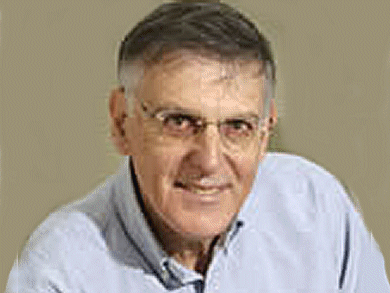The Nobel Prize in Chemistry has been awarded to Dan Shechtman, Israel Institute of Technology, Haifa, for the discovery of quasicrystals.
Crystals contain unit cells that are repeated with regularity throughout the crystal. This repetition was believed to be required in order to obtain a crystal and among the rotational symmetries, 2-, 3-, 4- and 6-fold axes are allowed, while 5-, 7- and all higher rotations are disallowed. Shechtman discovered 5-fold symmetry in his crystal sample that led to the realization that the crystal had a regular pattern that never repeated itself — the idea of quasicrystals was born. Within each symmetry class of quasicrystals, different superspace-group symmetries are allowed and realized so that while quasicrystals allow non-crystallographic symmetry, they are not defined by it.
The first quasicrystals discovered by Shechtman were synthetic intermetallics of Al with 10–14 % Mn, and while hundreds of intermetallic systems have been shown to yield quasicrystals, so far few other types of systems have been reported to be quasicrystalline.
- Shechtman’s homepage
- Shechtman on the Nobel Website
- Video of Shechtman explaining his discovery
- Interview with Shechtman in Haaretz newspaper
Also of interest:
- Flexible Crystals,
D. Bradley,
ChemViews magazine 2011.
New discovery not only hints at existence of “flexible” crystals, but also shows how such materials could be probed in greater detail - Quasicrystals: Sections of Hyperspace
W. Steurer,
Angew. Chem. Int. Ed. 2011.
DOI: 10.1002/anie.201107163 - On a Realistic Growth Mechanism for Quasicrystals
W. Steurer,
Z. Anorg. Allg. Chem. 2011.
DOI: 10.1002/zaac.201100210
Walter Steurer, ETH Zurich, Switzerland, proposed a realistic growth mechanism for quasicrystals in a recent ZAAC article. He suggests a two-step process where the well-known overlap rules for the fundamental atomic clusters are complemented by the new layer-continuation rule. - Quasicrystals: Structure and Physical Properties
Hans-Rainer Trebin (Editor)
Wiley, New York, USA, 2006.
ISBN: 978-3-527-60678-8
- Nobel Prize in Chemistry 2012
The Nobel Prize in Chemistry for 2012 has been awarded to R. Lefkowitz and B. Kobilka for their work on G protein-coupled receptors




